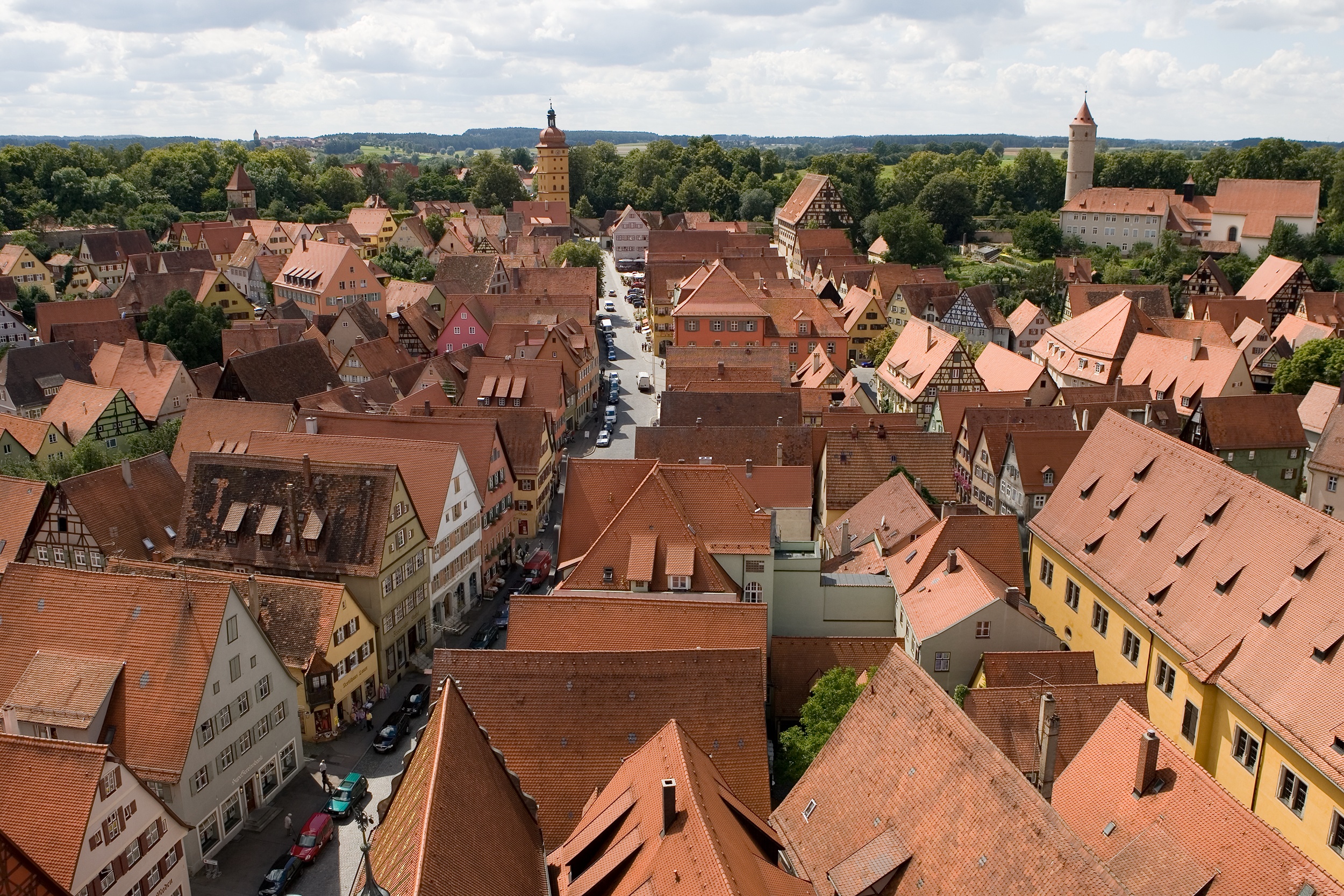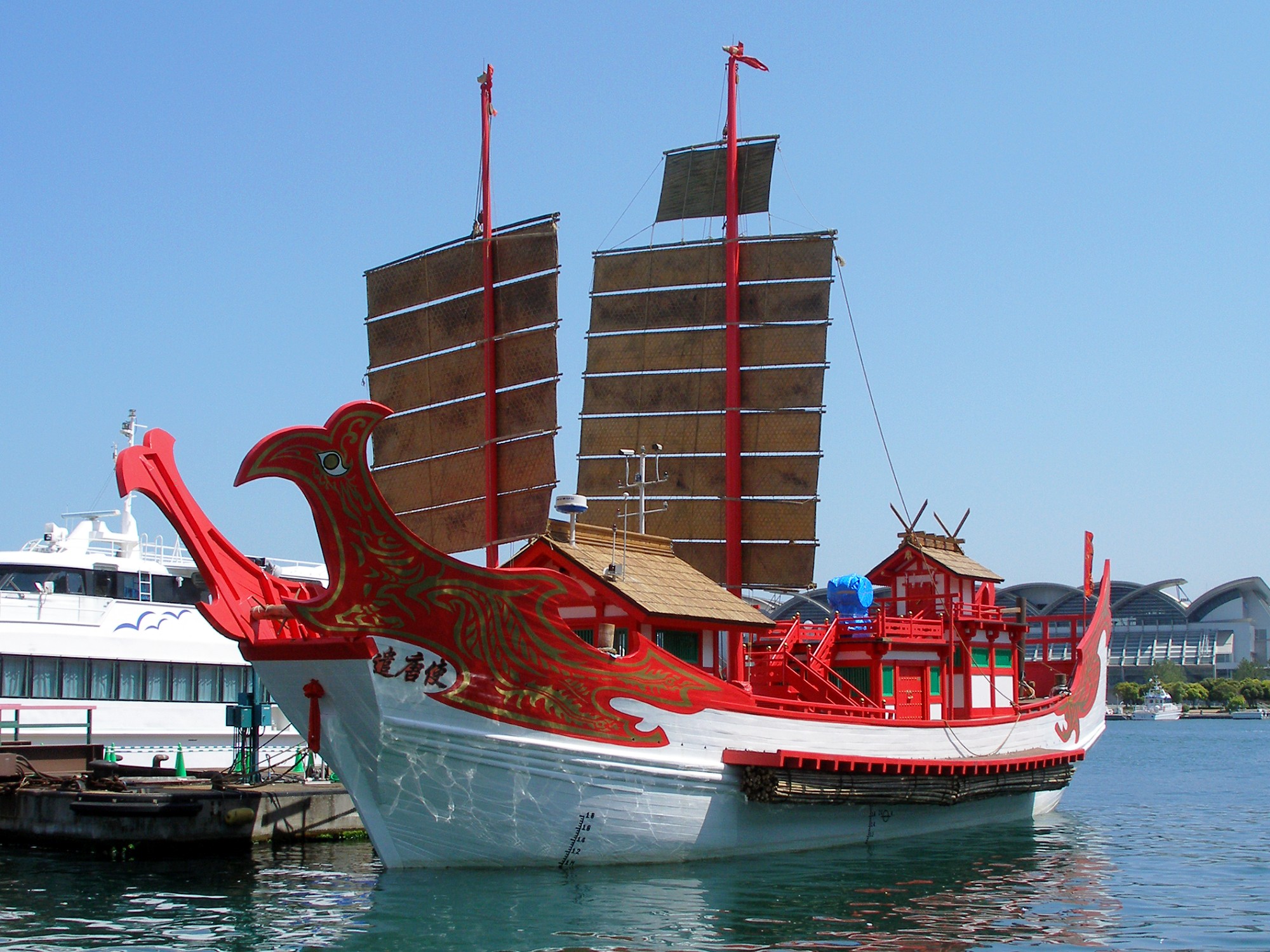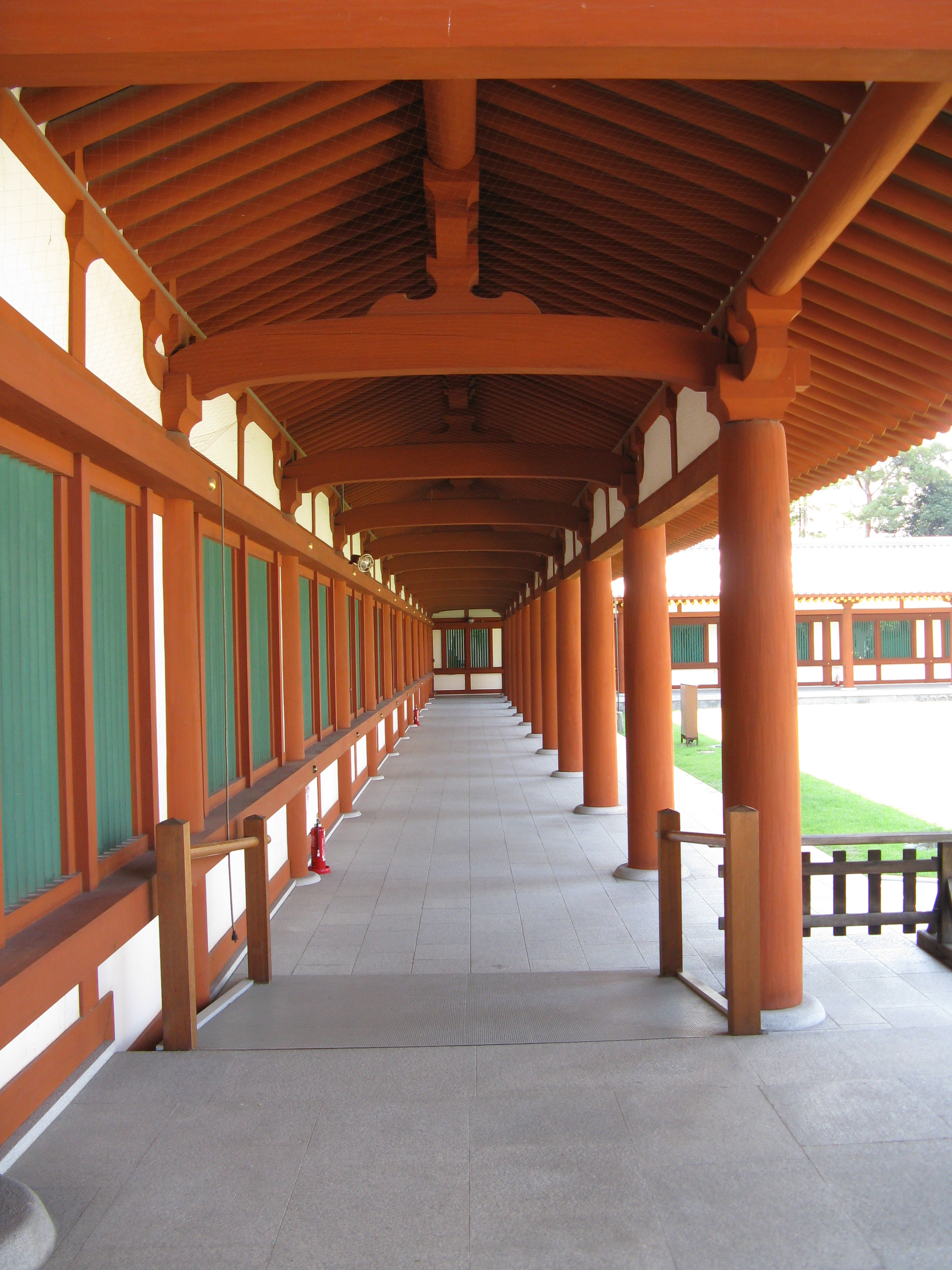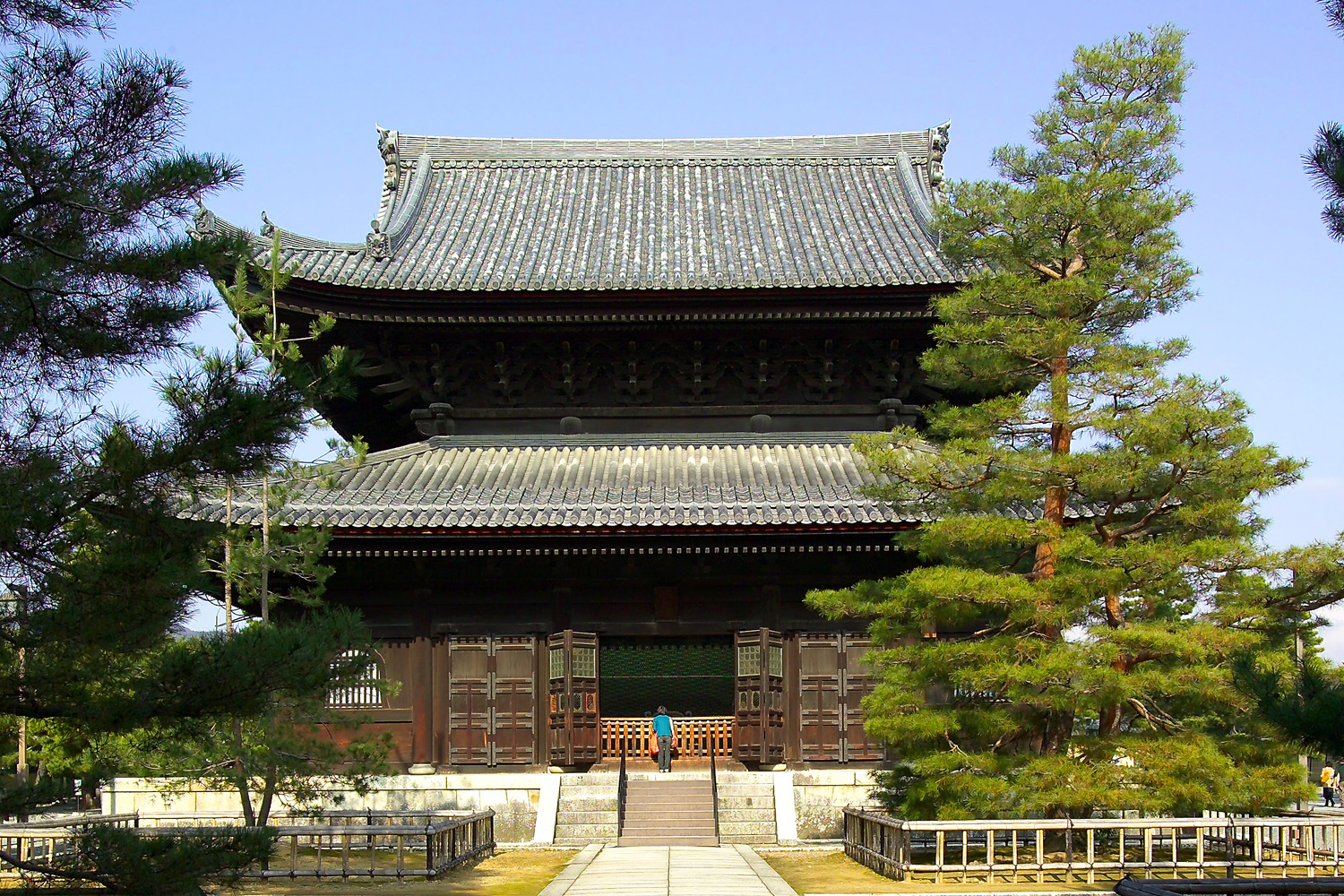|
Abe-dera
was a Buddhist temple established during the Asuka period in the city of Sakurai, Nara Prefecture, Japan. The temple no longer exists, and its ruins have been protected as a designated a National Historic Site since1970 Overview The temple ruins are located on the west side of an ancient road connecting the capital at Asuka] with Sakurai. The ruins are about 300 meters southwest of the well-known Abe Monju-in, and the entire area is said to have been the home of the Abe clan. According to the ''Nihon Shoki'', the Abe were descendants of Emperor Kōgen, the legendary 8th emperor of Japan. Per early 12th-century records at Tōdai-ji, Abe-dera was founded in 645 AD as the Abe clan ''bodaiji'' by Abe no Kurahashi, the ''Sadaijin'' at the time of the Taika Reform. Nothing is known of the subsequent history of the temple, and it appears to have fallen into decline at the end of the Heian period, and was relocated to the Abe Monju-in at after a fire in the Kamakura period. A ... [...More Info...] [...Related Items...] OR: [Wikipedia] [Google] [Baidu] |
Sakurai, Nara
file:Sakurai city-office.jpg, 270px, Sakurai City Hall is a city located in Nara Prefecture, Japan. , the city had an estimated population of 54,384 in 25678 households, and a population density of 550 persons per km2. The total area of the city is . Geography Sakurai is located in central Nara Prefecture. The western and northern parts of the city are located southeast of the Nara Basin, and are relatively flat rural areas with the Terakawa and Hatsusegawa (Yamatogawa) rivers flowing through them. The urban area is centered around Sakurai Station and Miwa Station, and along National Route 165. The Ryumon Mountains cover the southern and eastern parts of the city, Neighboring municipalities Nara Prefecture * Nara, Nara, Nara * Kashihara, Nara, Kashihara * Tenri, Nara, Tenri * Uda, Nara, Uda * Tawaramoto, Nara, Tawaramoto * Asuka, Nara, Asuka * Yoshino, Nara, Yoshino Climate Sakurai has a humid subtropical climate (Köppen ''Cfa'') characterized by warm summers and cool winters wi ... [...More Info...] [...Related Items...] OR: [Wikipedia] [Google] [Baidu] |
Heian Period
The is the last division of classical Japanese history, running from 794 to 1185. It followed the Nara period, beginning when the 50th emperor, Emperor Kammu, moved the capital of Japan to Heian-kyō (modern Kyoto). means in Japanese. It is a period in Japanese history when the Chinese influence on Japanese culture, Chinese influences were in decline and the national culture matured. The Heian period is also considered the peak of the Japanese Emperors of Japan, imperial court, noted for its Japanese art, art, especially Japanese poetry, poetry and Japanese literature, literature. Two syllabaries unique to Japan, katakana and hiragana, emerged during this time. This gave rise to Japan's famous vernacular literature, with many of its texts written by court ladies who were not as educated in Chinese as their male counterparts. Although the Imperial House of Japan had power on the surface, the real power was in the hands of the Fujiwara clan, a powerful Kuge, aristocratic family wh ... [...More Info...] [...Related Items...] OR: [Wikipedia] [Google] [Baidu] |
Tang Dynasty
The Tang dynasty (, ; zh, c=唐朝), or the Tang Empire, was an Dynasties of China, imperial dynasty of China that ruled from 618 to 907, with an Wu Zhou, interregnum between 690 and 705. It was preceded by the Sui dynasty and followed by the Five Dynasties and Ten Kingdoms period. Historians generally regard the Tang as a high point in Chinese civilisation, and a Golden age (metaphor), golden age of cosmopolitan culture. Tang territory, acquired through the military campaigns of its early rulers, rivalled that of the Han dynasty. The House of Li, Li family founded the dynasty after taking advantage of a period of Sui decline and precipitating their final collapse, in turn inaugurating a period of progress and stability in the first half of the dynasty's rule. The dynasty was formally interrupted during 690–705 when Empress Wu Zetian seized the throne, proclaiming the Wu Zhou dynasty and becoming the only legitimate Chinese empress regnant. The An Lushan rebellion (755 ... [...More Info...] [...Related Items...] OR: [Wikipedia] [Google] [Baidu] |
Arabesque
The arabesque is a form of artistic decoration consisting of "surface decorations based on rhythmic linear patterns of scrolling and interlacing foliage, tendrils" or plain lines, often combined with other elements. Another definition is "Foliate ornament, used in the Islamic world, typically using leaves, derived from stylised half-palmettes, which were combined with spiralling stems". It usually consists of a single design which can be ' tiled' or seamlessly repeated as many times as desired. Within the very wide range of Eurasian decorative art that includes motifs matching this basic definition, the term "arabesque" is used consistently as a technical term by art historians to describe only elements of the decoration found in two phases: Islamic art from about the 9th century onwards, and European decorative art from the Renaissance onwards. Interlace and scroll decoration are terms used for most other types of similar patterns. Arabesques are a fundamental element of Isla ... [...More Info...] [...Related Items...] OR: [Wikipedia] [Google] [Baidu] |
Roof Tile
Roof tiles are overlapping tiles designed mainly to keep out precipitation such as rain or snow, and are traditionally made from locally available materials such as clay or slate. Later tiles have been made from materials such as concrete, glass, and plastic. Roof tiles can be affixed by screws or nail (fastener), nails, but in some cases historic designs utilize interlocking systems that are self-supporting. Tiles typically cover an List of commercially available roofing materials, underlayment system, which seals the roof against water intrusion. Categories There are numerous profiles, or patterns, of roof tile, which can be separated into categories based on their installation and design. Shingle / flat tiles One of the simplest designs of roof tile, these are simple overlapping slabs installed in the same manner as traditional roof shingle, shingles, usually held in place by nails or screws at their top. All forms of slate tile fall into this category. When installed, mos ... [...More Info...] [...Related Items...] OR: [Wikipedia] [Google] [Baidu] |
Yamada-dera
file:210401 Model of the garan of Yamada-dera seen from east side.jpg, 290px, Model of Yamada-dera Temple at the time of its construction. A part of the 1/1000 model of Fujiwara-kyo in the Kashihara-shi Fujiwara-kyo reference room. was a Buddhist temples in Japan, Buddhist temple established in the Asuka period in Sakurai, Nara, Sakurai, Nara Prefecture, Japan. The area was Cultural Properties of Japan, designated a Monuments of Japan, National Historic Site in 1921, with its status elevated to a Special National Historic Site in 1952. It also forms part of a grouping of sites submitted in 2007 for World Heritage Site#Nominating process, future inscription on the UNESCO World Heritage List: Asuka-Fujiwara, Asuka-Fujiwara: Archaeological sites of Japan’s Ancient Capitals and Related Properties. Excavations in the 1980s uncovered a well-preserved section of the temple's Kairō, covered corridors that predate the List of Important Cultural Properties of Japan (Asuka period: structure ... [...More Info...] [...Related Items...] OR: [Wikipedia] [Google] [Baidu] |
Japanese Missions To Tang China
The were Japanese efforts to learn Chinese culture and civilization from Tang China, in the 7th, 8th and 9th centuries. The nature of those contacts evolved gradually from political and ceremonial change into cultural exchanges, and the process accompanied growing commercial ties which developed over time. From 607 to 839, Japan sent 19 missions to Sui and Tang Empires of China (a mission planned for 894 was cancelled). For each expedition, knowledge and learning were the principal objectives. Priests from Japan studied Chinese Buddhism, officials from Japan studied Chinese government, doctors from Japan studied Chinese medicine, and painters from Japan studied Chinese painting. Approximately one third of those who embarked from Japan did not survive to return home.Hoffman, Michael "Cultures Combined in the Mists of Time: Origins of the China-Japan relationship,"''Asia Pacific Journal: Japan Focus.'' February 3, 2006; reprinting article in ''Japan Times,'' January 29, 2006. S ... [...More Info...] [...Related Items...] OR: [Wikipedia] [Google] [Baidu] |
Abe No Nakamaro
, also known by his Chinese name Chao Heng ( zh, c=晁衡, pronounced ''Chōkō'' in Japanese), was a Japanese scholar and '' waka'' poet of the Nara period. He served on a Japanese envoy to Tang China and later became the Tang '' duhu'' (protectorate governor) of Annan (modern Vietnam). Nussbaum, Louis-Frédéric. (2005)"Abe no Nakamaro, "'Japan Encyclopedia'', p. 3. Early life He was a descendant of , the son of Emperor Kōgen and first son of . As a young man he was admired for having outstanding academic skills. Career In 717–718, he was a member of the Japanese mission to Tang China (''Kentōshi'') along with Kibi no Makibi and Genbō. They returned to Japan; he did not. In China, he passed the civil-service examination. Around 725, he took an administrative position and was promoted in Luoyang in 728 and 731. Around 733 he received , who would command the Japanese diplomatic mission. In 734, Abe tried to return to Japan, but the ship that was to take him ... [...More Info...] [...Related Items...] OR: [Wikipedia] [Google] [Baidu] |
Kairō
Two examples of ''kairō'' , , is the Japanese version of a cloister, a covered corridor originally built around the most sacred area of a Buddhist temples in Japan, Buddhist temple, a zone which contained the ''Main Hall (Japanese Buddhism), kondō'' and the ''tō''. Nowadays it can be found also at Shinto shrines and at ''shinden-zukuri'' aristocratic residences. The ''kairō'' and the ''rōmon'' were among the most important among the ''garan'' elements which appeared during the Heian period. The first surrounded the holiest part of the ''garan'', while the second was its main exit. Neither was originally characteristic of Shinto shrines, but in time they often came to replace the traditional shrine surrounding fence called ''tamagaki''. The earliest example of a ''kairō''/''rōmon'' complex can be found at Iwashimizu Hachiman-gū, a shrine now but a former .On the subject of shrine-temple complexes, see the article ''Shinbutsu shūgō''. The ''rōmon'' is believed to ha ... [...More Info...] [...Related Items...] OR: [Wikipedia] [Google] [Baidu] |
Japanese Pagoda
Multi-storied pagodas in wood and stone, and a ''gorintō'' Pagodas in Japan are called , sometimes or , and derive historically from the Chinese pagoda, itself an interpretation of the Indian ''stupa''. Like the ''stupa'', pagodas were originally used as reliquaries, but in many cases ended up losing this function. Pagodas are quintessentially Buddhist and an important component of Buddhist temples in Japan, Japanese Buddhist temple compounds but, because until the Shinbutsu bunri, Kami and Buddhas Separation Act of 1868, a Shinto shrine was normally Shinbutsu-shūgō, also a Buddhist temple and vice versa, they are not rare at shrines either. The famous Itsukushima Shrine, for example, has one. After the Meiji Restoration the word ''tō'', once used exclusively in a religious context, came to mean also "tower" in the western sense, as for example in . Of the Japanese pagoda's many forms, some are built in wood and are collectively known as , but most are carved out of ston ... [...More Info...] [...Related Items...] OR: [Wikipedia] [Google] [Baidu] |
Main Hall (Japanese Buddhism)
Main hall or Main Temple is the building within a Japanese Buddhist monastery compound ('' garan'') which enshrines the main object of veneration.Kōjien Japanese dictionary Because the various denominations deliberately use different terms, this single English term translates several Japanese words, among them ''butsuden'', ''butsu-dō'', ''kondō'', ''konpon-chūdō'', and ''hondō''. ''Hondō'' is its exact Japanese equivalent, while the others are more specialized words used by particular sects or for edifices having a particular structure. Kondō (Asuka and Nara periods) The term started to be used during the Asuka and Nara periods. A ''kondō'' is the centerpiece of an ancient Buddhist temple's ''garan'' in Japan. The origin of the name is uncertain, but it may derive from the perceived preciousness of its content, or from the fact that the interior was lined with gold. This is the name used by the oldest temples in the country.Iwanami Nihonshi Jiten A ''kondō'', for exa ... [...More Info...] [...Related Items...] OR: [Wikipedia] [Google] [Baidu] |
Ikaruga, Nara
file:Horyu-ji10s3200.jpg, 280px, Horyu-ji is a List of towns in Japan, town in Ikoma District, Nara, Japan. , the town had an estimated population of 28,036 in 12,292 households, and a population density of 2000 persons per km2. The total area of the town is Ikaruga is home to Hōryū-ji and Hokki-ji, ancient Buddhism, Buddhist temples collectively inscribed as UNESCO World Heritage Sites. Other ancient temples include Hōrin-ji (Nara), Hōrin-ji, also in the vicinity of Hōryū-ji. The town was named after the palace of Prince Shōtoku, Hōryū-ji#Yumedono (Hall of Dreams), Ikaruga-no-Miya (''Imperial Palace of Ikaruga'', or ''Imperial House of Ikaruga''), whose grounds were at Hōryū-ji. Geography Topographically, Ikaruga is divided into a mountain forest area in the north, a hilly area in the center, and a plain area in the south. The northern mountain forest area is the southern end of the Yata Hills, which are part of the Ikoma Mountains, and Mount Matsuo is located there. ... [...More Info...] [...Related Items...] OR: [Wikipedia] [Google] [Baidu] |








